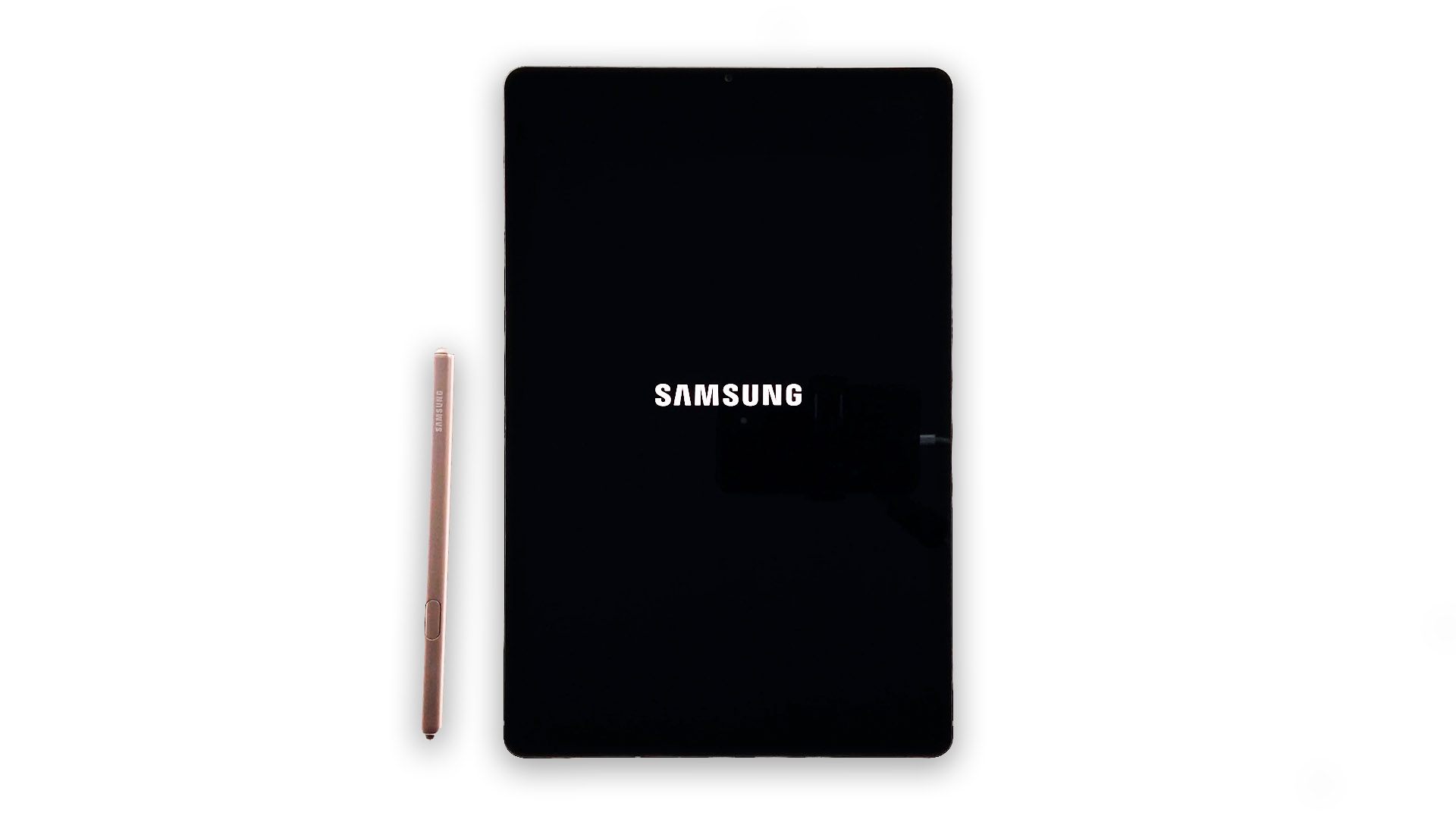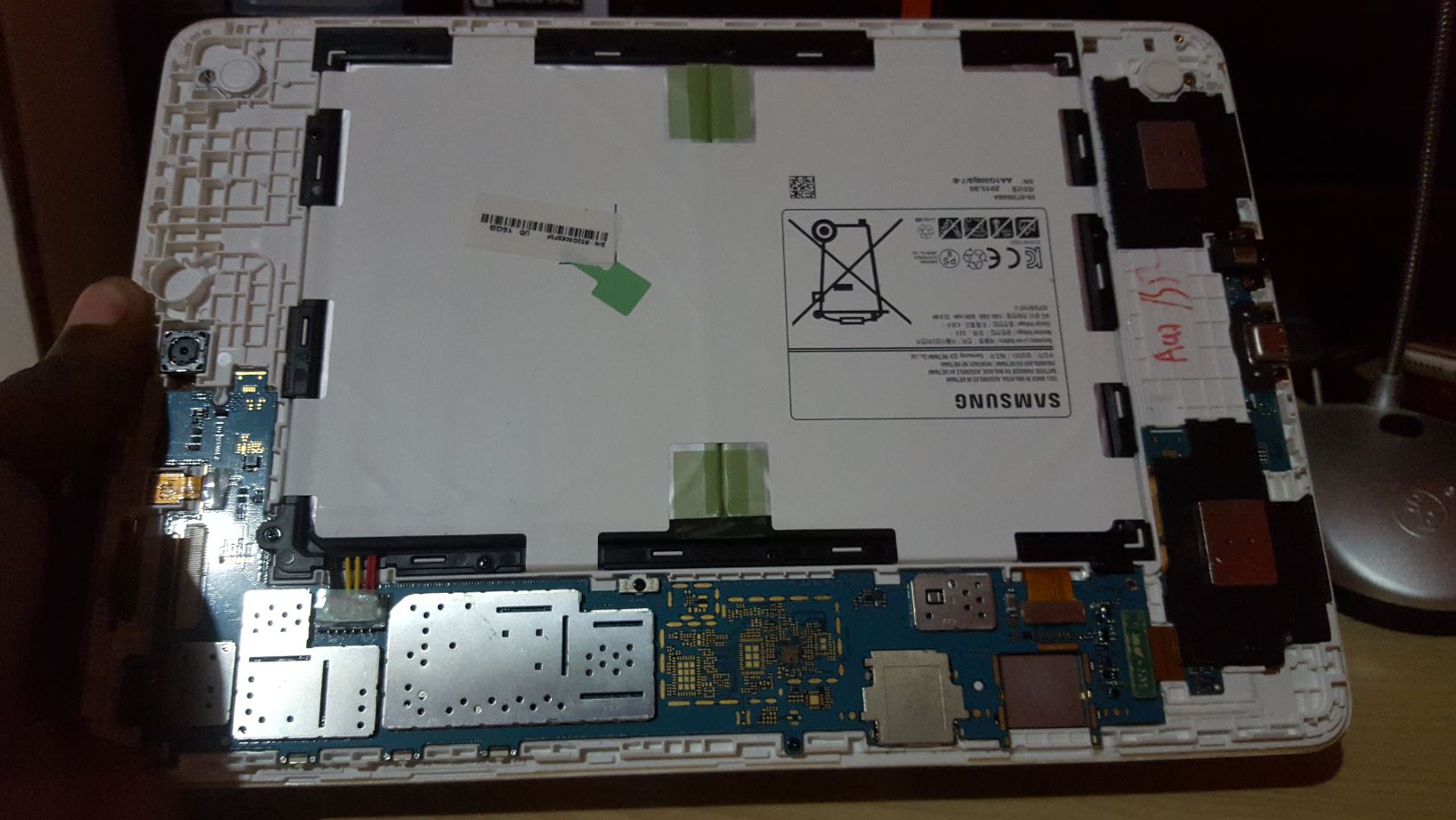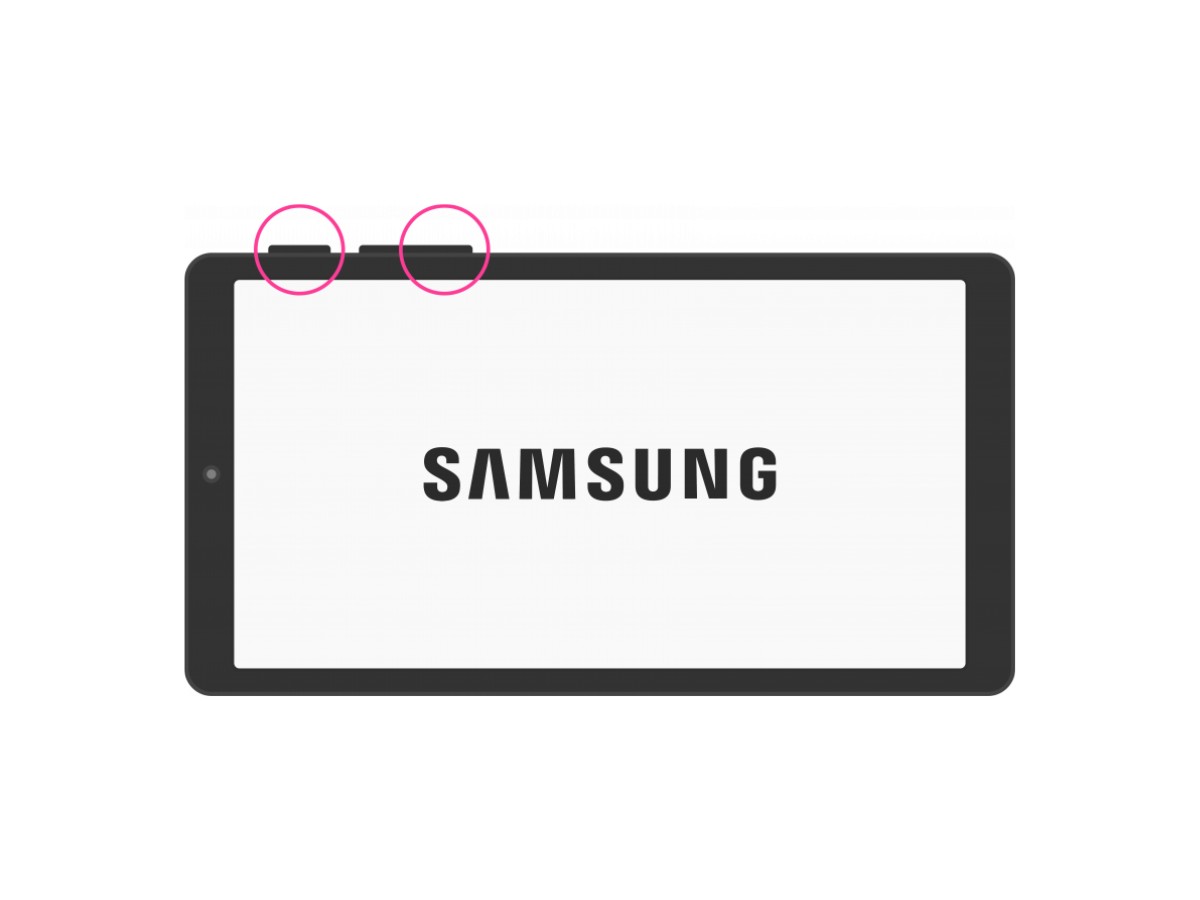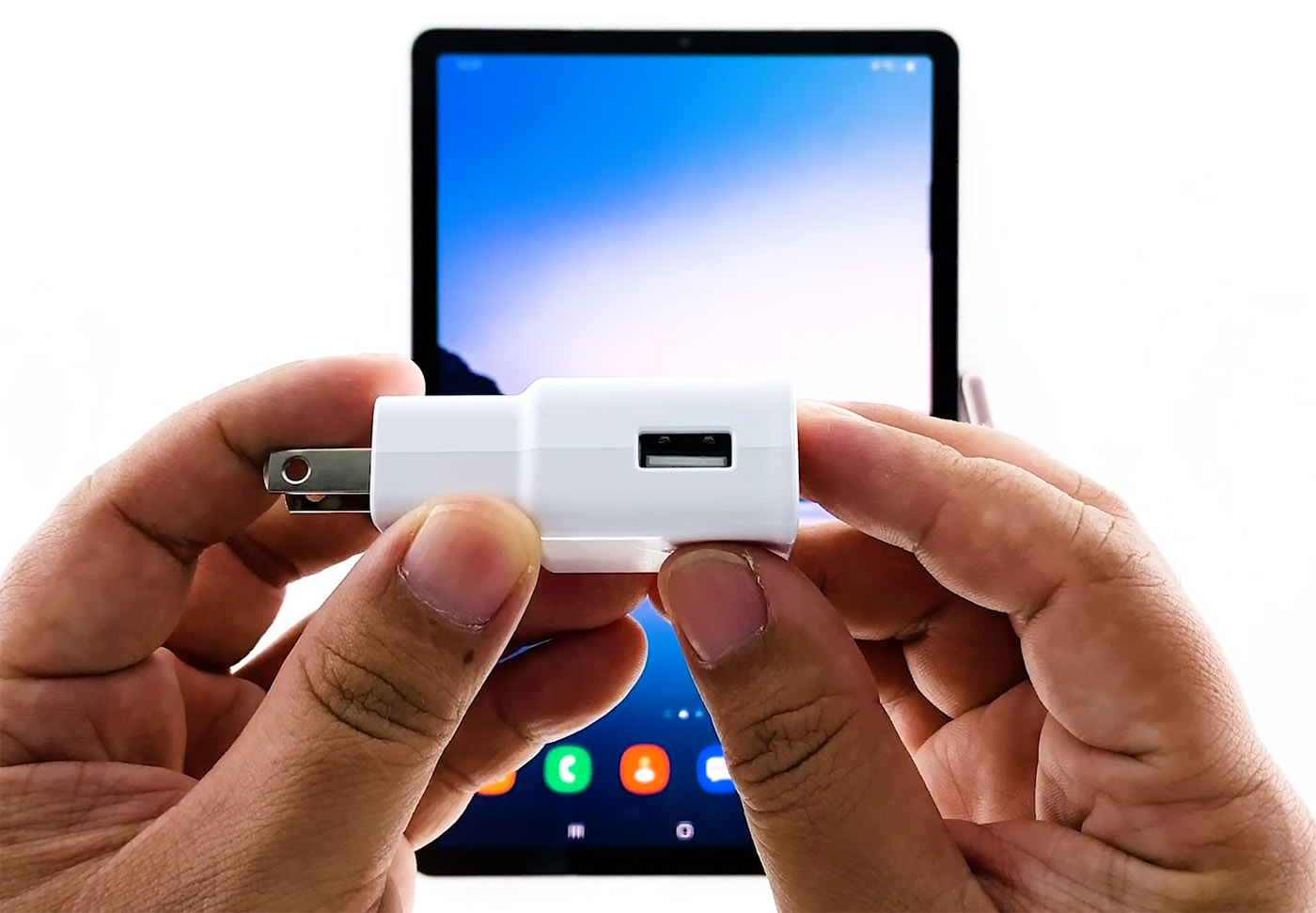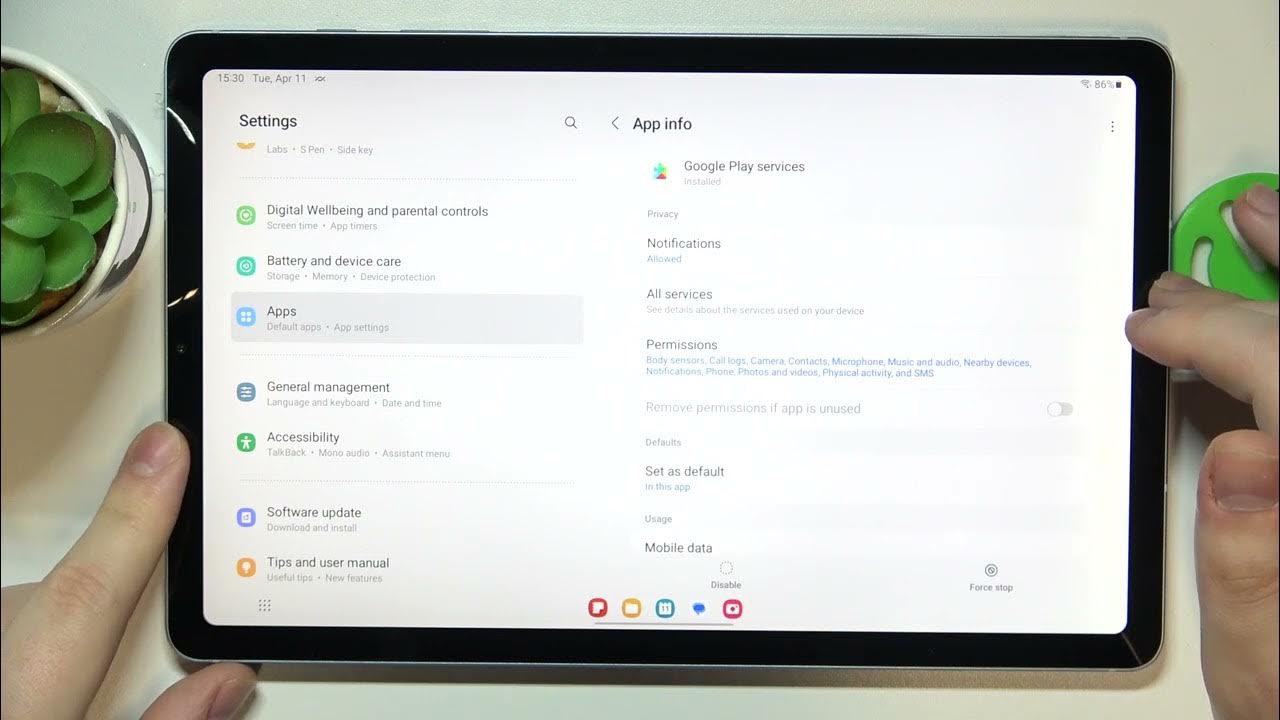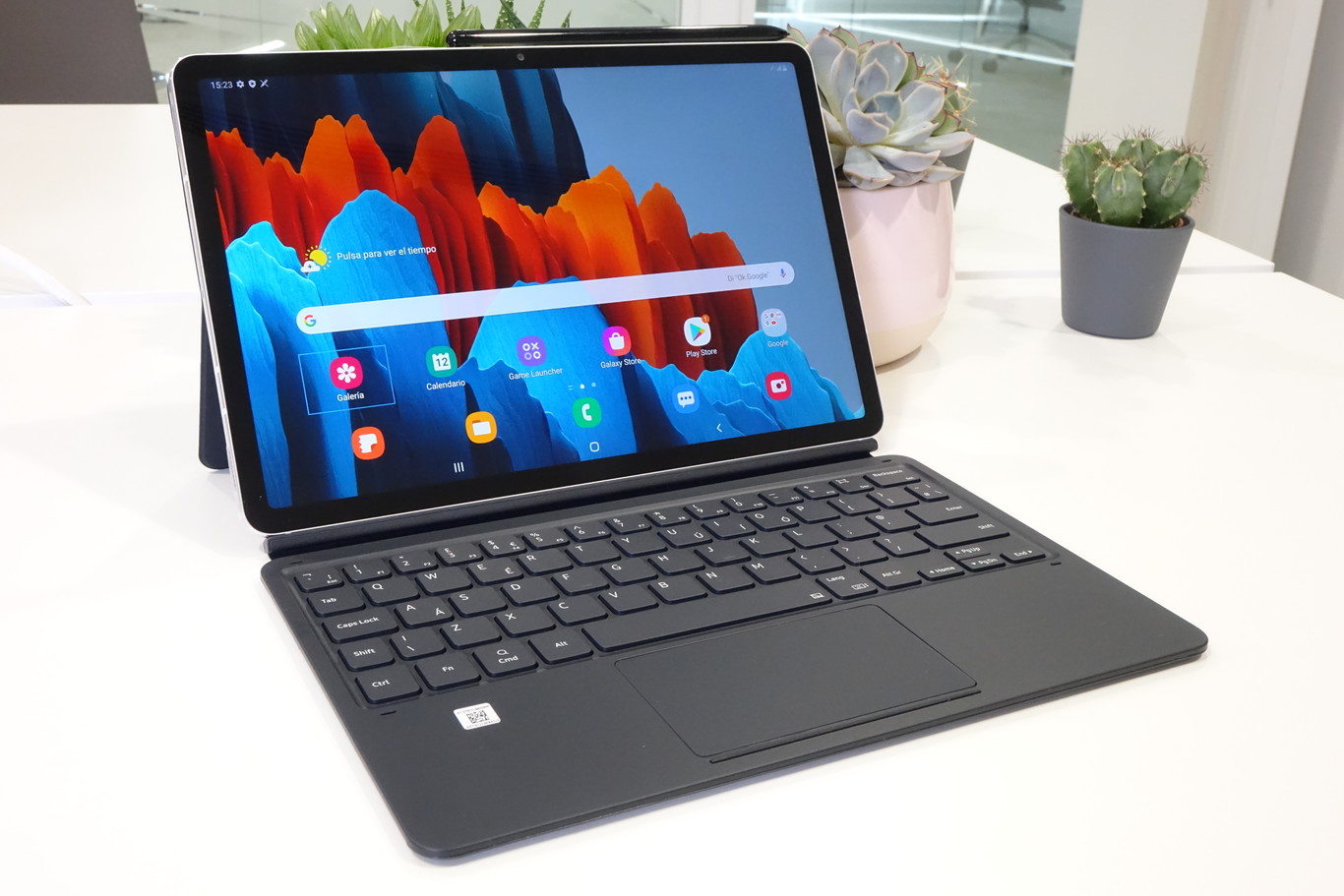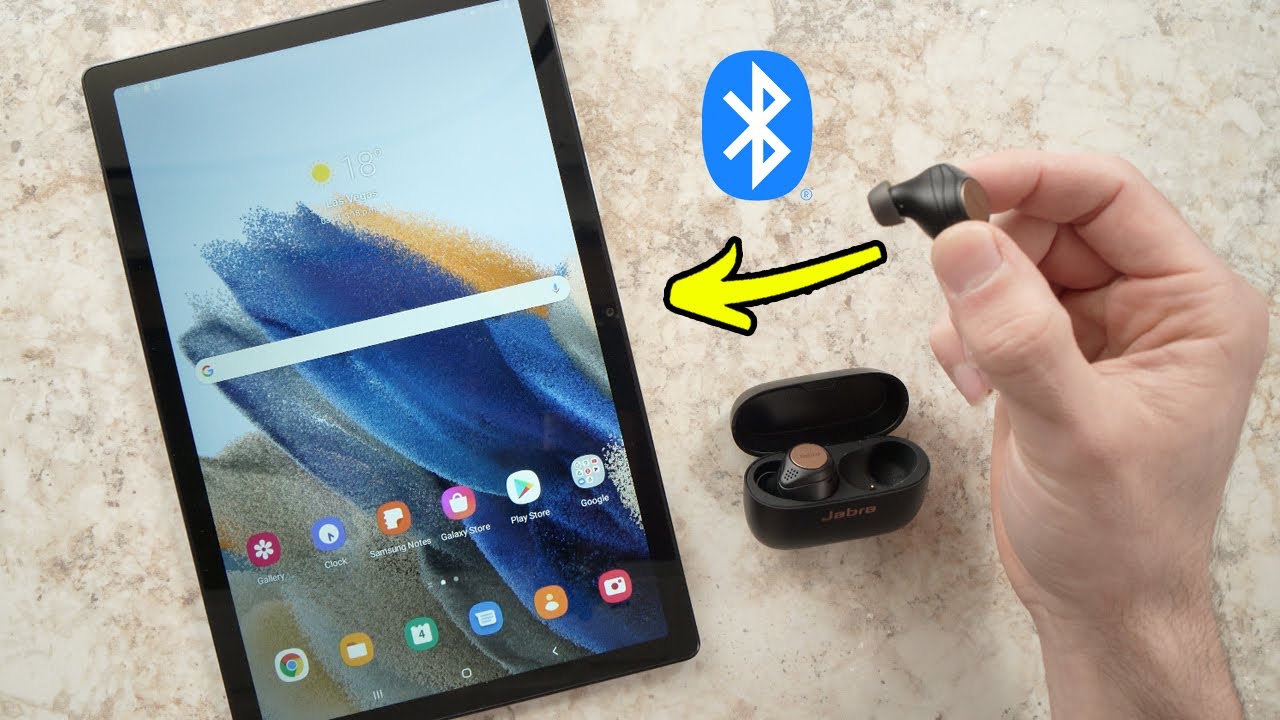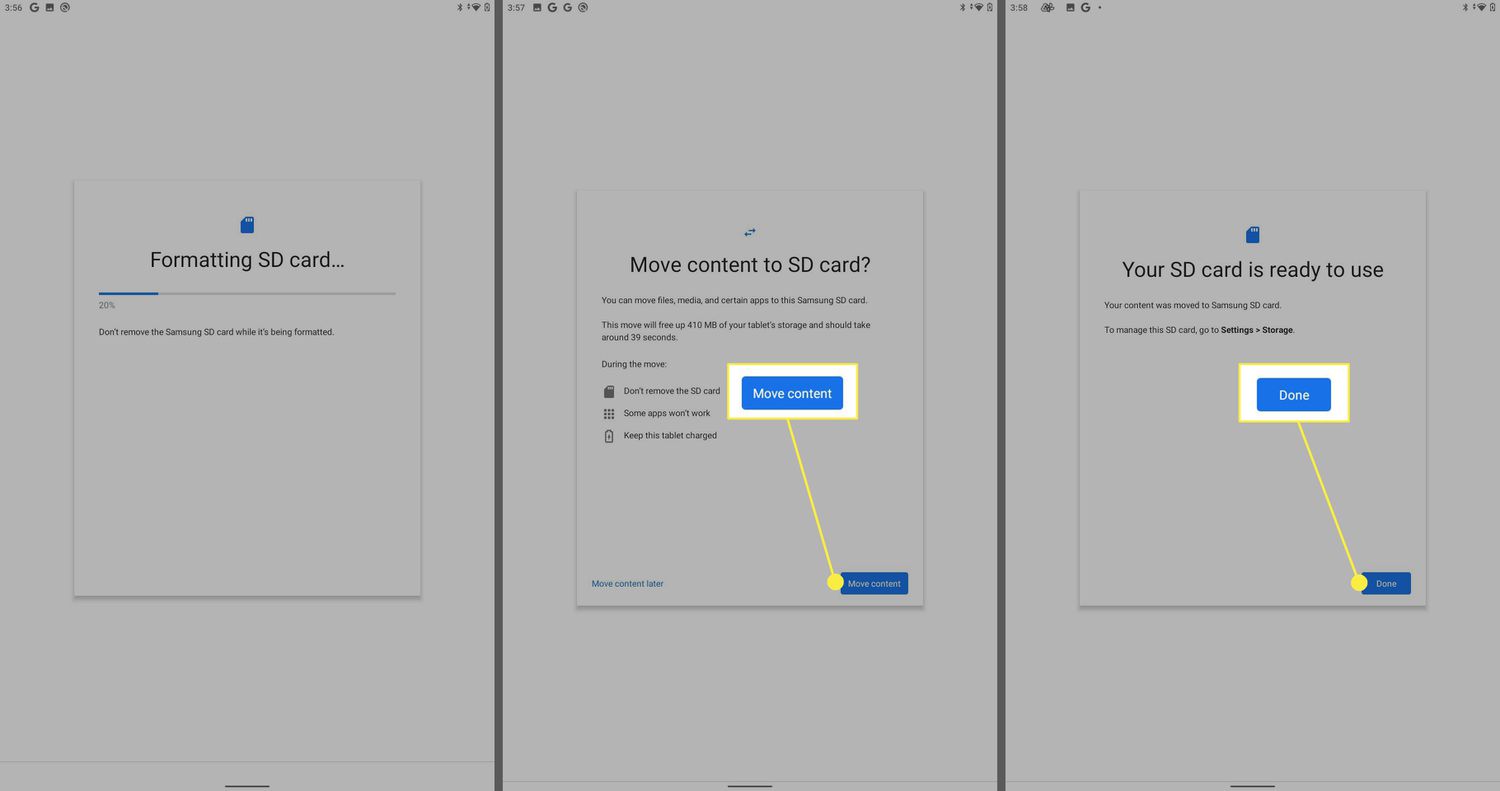Introduction
Welcome to our guide on what to do if your Samsung tablet won’t turn on. It can be frustrating when you try to power up your device, only to be met with a blank screen and no sign of life. However, before you start panicking, there are several common reasons why your Samsung tablet might not turn on, as well as troubleshooting steps you can take to resolve the issue.
Tablets have become an essential part of our daily lives, allowing us to stay connected, work, play games, and access a wealth of information on the go. However, just like any other electronic device, they can experience technical difficulties from time to time.
In this guide, we will explore common reasons why your Samsung tablet might refuse to power on, and we will walk you through step-by-step troubleshooting methods to help you get your tablet back up and running. From checking the battery level to performing a factory reset, we’ve got you covered!
Before we dive into the troubleshooting steps, it’s important to note that the methods we’ll discuss are applicable to most Samsung tablet models. However, there may be slight variations between models, so it’s always a good idea to consult your device’s user manual or visit the Samsung support website for specific instructions for your tablet model.
Now, let’s get started and learn what to do if your Samsung tablet won’t turn on.
Common Reasons Your Samsung Tablet Won’t Turn On
If your Samsung tablet won’t turn on, it could be due to a variety of reasons. Understanding these common causes can help you troubleshoot the issue more effectively. Here are some potential reasons why your tablet may not be powering on:
- Dead Battery: One of the most common reasons for a tablet not turning on is a dead or drained battery. If your device has been sitting idle for a while or hasn’t been charged properly, the battery may have lost all its power.
- Charging Port Issues: A faulty charging port can prevent your tablet from charging properly. If the port is damaged, loose, or blocked, it may not establish a secure connection with the charger, leading to power issues.
- Software Glitches: Your tablet’s operating system may encounter glitches or errors that prevent it from booting up. This can occur due to outdated software, incompatible apps, or malware infections.
- Physical Damage: Accidental drops, water exposure, or other physical damage can cause internal components to malfunction, resulting in an unresponsive tablet. Physical damage is more likely to be the cause if your tablet stopped working after a specific incident.
- System Overload: Running too many resource-intensive apps or having multiple processes running simultaneously can overload the system, causing it to freeze or become unresponsive. This can prevent your tablet from turning on or responding to commands.
Keep in mind that these are just a few examples of potential reasons why your Samsung tablet won’t turn on. Each situation is unique, and it’s essential to consider the specific circumstances surrounding the issue.
In the next section, we will walk you through troubleshooting steps that can help you resolve these problems and get your tablet back up and running.
Troubleshooting Steps
If you’re facing the frustrating issue of your Samsung tablet not turning on, don’t worry. There are several troubleshooting steps you can take to resolve the problem. Follow these steps in order, as they progress from simple fixes to more advanced solutions:
- Check the Battery Level: Before assuming any technical issues, make sure your tablet has enough battery power. Press and hold the Power button for a few seconds to see if any signs of life appear.
- Charge Your Tablet: Connect your tablet to a power source using the original charger and cable. Leave it connected for at least 15 minutes to ensure it has enough charge. Look for the battery icon or LED indicator to confirm that it’s charging.
- Perform a Soft Reset: If your tablet is still unresponsive, perform a soft reset by pressing and holding the Power button and Volume Down button together for about 10-15 seconds. This will force your tablet to restart.
- Force Restart Your Tablet: If a soft reset doesn’t work, try a force restart. Press and hold the Power button for about 10-15 seconds until your tablet powers off and then release the button. Wait a few seconds and then press the Power button again to turn it back on.
- Boot into Safe Mode: Sometimes, a problematic app may be causing your tablet to malfunction. Booting into Safe Mode can help you identify and resolve the issue. Press and hold the Power button to bring up the Power options menu. Tap and hold the “Power off” button until the “Reboot to Safe Mode” option appears, then select it.
- Check for System Updates: Outdated software can lead to compatibility issues and system glitches. Check for any available system updates by going to Settings > Software Update. If an update is available, install it and restart your tablet.
- Factory Reset Your Tablet: Performing a factory reset should be a last resort, as it will erase all data and return your tablet to its original settings. Be sure to back up your important files before proceeding. To factory reset, go to Settings > General Management > Reset > Factory Data Reset. Follow the on-screen instructions to complete the process.
- Contact Samsung Support: If none of the above steps work, it’s time to seek professional help. Contact Samsung support for further assistance. Their trained technicians can diagnose and fix hardware or software issues that might be causing your tablet not to turn on.
Remember, these troubleshooting steps are general guidelines, and specific steps may vary depending on your tablet model and operating system version.
Now that you’re armed with these troubleshooting methods, let’s get your Samsung tablet up and running again!
Check the Battery Level
One of the most common reasons for a Samsung tablet not turning on is a dead or drained battery. It’s possible that your device has been idle for a while or hasn’t been charged properly, causing the battery to lose all its power. Before assuming any technical issues, it’s essential to check the battery level. Here’s how:
- Press and Hold the Power Button: Locate the Power button on your tablet. Press and hold it for a few seconds and observe if there are any signs of life. Sometimes, the battery may be completely drained, and it could take a few seconds for any indications of power to appear.
- Connect the Tablet to a Charger: If pressing the Power button doesn’t yield any results, it’s time to charge your tablet. Connect your tablet to a power source using the original charger and cable. Ensure that it’s securely connected to both the tablet and the power outlet.
- Observe for Charging Indications: After connecting your tablet to the charger, look for signs that it’s charging. Depending on your tablet model, you may see a battery icon on the screen with a charging animation or a LED indicator light up. These are indications that the tablet is receiving power.
- Leave the Tablet Charging: Allow your tablet to charge for at least 15 minutes. During this time, the battery may have accumulated enough power to turn on the device. Be patient and avoid using it during this period.
If your tablet still doesn’t power on after charging it for a sufficient amount of time, it’s time to move on to other troubleshooting steps. It’s crucial to rule out the possibility of a dead battery before exploring further technical issues. However, if the battery level was the cause, your tablet should now boot up and be ready to use.
Remember, different tablet models may have slightly different indicators for battery level and charging. Consult your tablet’s user manual or visit the Samsung support website for specific instructions related to your device.
Now that you’ve checked the battery level, let’s proceed to the next troubleshooting step.
Charge Your Tablet
If your Samsung tablet won’t turn on, it’s possible that the battery has drained or is completely dead. Charging your tablet is the next step in troubleshooting the issue. Follow these steps to ensure your tablet is properly charged:
- Connect the Charger: Locate the charging port on your tablet and connect the original charger and cable. Ensure that both ends of the cable are securely plugged in. You may hear a click or feel a slight resistance when the charger is properly inserted.
- Check the Power Outlet: Verify that the power outlet you’re using is functioning correctly. Try plugging in another device or using a different outlet to rule out any electrical issues.
- Observe for Charging Indications: After connecting the charger, keep an eye out for signs that your tablet is charging. Depending on your tablet model, you may see a battery icon on the screen with a charging animation or a LED indicator that lights up. These indicators confirm that your tablet is receiving power.
- Leave the Tablet Charging: Allow your tablet to charge for at least 15 minutes. During this time, the battery should accumulate enough power to turn on the device. Be patient and avoid using the tablet while it’s charging.
If your tablet still shows no signs of life after charging it for the recommended time, there may be other underlying issues causing the problem. However, it’s crucial to eliminate the possibility of a drained battery before proceeding to further troubleshooting steps.
Remember, different tablet models may have slight variations in charging indicators and times. Consult your tablet’s user manual or visit the Samsung support website for specific instructions related to your device.
Now that your tablet is charging, let’s move on to the next troubleshooting step.
Perform a Soft Reset
If your Samsung tablet still won’t turn on after charging it, performing a soft reset can often solve the issue. A soft reset involves restarting your tablet without deleting any data. Here’s how you can perform a soft reset:
- Locate the Power and Volume Down buttons: Identify the Power button and the Volume Down button on your tablet. The specific placement of these buttons may vary depending on your tablet model.
- Press and Hold the Power and Volume Down buttons: Simultaneously press and hold both the Power button and the Volume Down button for about 10-15 seconds. Keep holding the buttons even if the screen goes black or if you see the Samsung logo appear and disappear. This ensures that the soft reset is performed successfully.
- Release the buttons: After holding the buttons for the specified time, release both the Power and Volume Down buttons.
- Wait for the Tablet to Restart: Your tablet will now initiate the soft reset. Wait for a few seconds to see if your tablet powers on. It may take a little longer than usual for the tablet to start up, so be patient during this process.
Performing a soft reset can help resolve temporary software glitches that may be preventing your tablet from turning on. It essentially refreshes the system without erasing any data or settings. If a minor software issue was causing the problem, a soft reset will often rectify it.
If your tablet remains unresponsive even after performing a soft reset, don’t worry. There are further troubleshooting steps to try. Let’s proceed to the next step.
Force Restart Your Tablet
If your Samsung tablet still refuses to turn on after attempting a soft reset, you can try a force restart. This method is slightly different from a soft reset and can help resolve more stubborn issues. Here’s how to force restart your tablet:
- Locate the Power Button: Find the Power button on your tablet. It is usually located on the edge or at the top of the device.
- Press and Hold the Power Button: Press and hold the Power button for about 10-15 seconds. Keep holding it even if the screen goes black or if you see the Samsung logo appear and disappear. This will ensure that the force restart is performed successfully.
- Release the Power Button: After holding the Power button for the specified time, release it.
- Wait for the Tablet to Restart: Your tablet will now initiate the force restart. Wait for a few seconds to see if your tablet powers on. It may take a little longer than usual for the tablet to start up, so be patient during this process.
A force restart is a more comprehensive restart method that can help resolve stubborn software or hardware issues. By forcibly restarting the tablet, you are essentially resetting the device and giving it a fresh start.
If your tablet still doesn’t respond after a force restart, there may be more persistent issues at play. Don’t worry; there are further troubleshooting steps to explore. Let’s move on to the next step.
Boot into Safe Mode
If your Samsung tablet is still not powering on, you can try booting it into Safe Mode. Safe Mode allows your tablet to start up with only the essential system software, which can help identify whether a third-party app is causing the issue. Here’s how to boot your tablet into Safe Mode:
- Press and Hold the Power Button: Locate the Power button on your tablet and press and hold it to bring up the Power options menu.
- Tap and Hold the “Power off” Button: On the Power options menu, you should see an option to “Power off” your tablet. Tap and hold the “Power off” button until the “Reboot to Safe Mode” option appears. It may vary slightly depending on your tablet model.
- Select “Reboot to Safe Mode”: Once the “Reboot to Safe Mode” option appears, tap on it to initiate the process. Your tablet will then restart and boot into Safe Mode.
- Observe for Safe Mode: When your tablet starts up in Safe Mode, a “Safe Mode” label may appear somewhere on the screen, indicating that it is in this mode. This label may appear in the bottom-left corner or as a watermark on the screen.
In Safe Mode, only the pre-loaded system apps will be available, while third-party apps will be temporarily disabled. Check if your tablet functions properly while in Safe Mode. If it does, it suggests that a third-party app may be causing the issue. You can then proceed to uninstall recently installed or suspicious apps.
Restart your tablet after exiting Safe Mode to return to normal operation. If the tablet still does not power on or exhibits the same issues, further troubleshooting steps will be required. Let’s move on to the next step to see if system updates can resolve the problem.
Check for System Updates
If your Samsung tablet is not turning on, outdated system software could be the culprit. It’s important to regularly check for and install system updates on your device. These updates often include bug fixes, performance improvements, and security patches that can resolve software-related issues. Follow these steps to check for system updates:
- Open the Settings Menu: Locate the Settings app on your tablet. It’s typically represented by an icon that resembles a gear or cog.
- Scroll Down and Tap on “Software Update”: Scroll through the settings options until you find “Software Update.” Tap on it to access the system update settings.
- Tap on “Download and Install”: Within the “Software Update” menu, look for the “Download and Install” option. If a system update is available for your tablet, it will be displayed here. Tap on it to initiate the download and installation process.
- Follow the On-Screen Instructions: Depending on your tablet model and the size of the update, you may need to connect your tablet to a stable Wi-Fi network or ensure that it has enough battery charge. Follow the on-screen instructions to complete the update process.
- Restart Your Tablet: After the system update is installed, restart your tablet. This will ensure that the updated software is properly integrated, which may help resolve any issues causing the tablet not to turn on.
Updating your tablet’s software can fix bugs, compatibility issues, and other firmware-related problems that might be preventing it from powering on. It’s advisable to keep your tablet regularly updated to ensure optimal performance and stability.
If your tablet still refuses to turn on after installing the system update, don’t worry. There are further troubleshooting steps to explore. Let’s move on to the next step and learn about factory resetting your tablet.
Factory Reset Your Tablet
If all other troubleshooting steps have failed and your Samsung tablet still won’t turn on, performing a factory reset may be necessary. Factory resetting your tablet will erase all data and settings, returning it to its original factory state. Before proceeding, it’s crucial to back up any important files or data you want to keep. Here’s how to perform a factory reset:
- Open the Settings Menu: Locate the Settings app on your tablet and open it. The Settings app is usually represented by an icon that resembles a gear or cog.
- Scroll Down and Tap on “General Management”: Scroll through the settings options until you find “General Management.” Tap on it to access the general management settings.
- Tap on “Reset”: Within the “General Management” menu, look for the “Reset” option. Tap on it to access the reset settings.
- Select “Factory Data Reset”: On the reset settings screen, you should see an option labeled “Factory Data Reset.” Tap on it to initiate the factory reset process.
- Confirm the Factory Reset: A confirmation prompt will appear, informing you that the factory reset will delete all data and settings. Read the prompt carefully, and if you’re ready to proceed, confirm the reset. Keep in mind that this action cannot be undone.
- Follow the On-Screen Instructions: Your tablet will guide you through the process of performing a factory reset. You may need to enter your device’s PIN or password and confirm the reset again. Follow the on-screen instructions to complete the factory reset.
Once the factory reset is complete, your tablet will be restored to its original factory settings. It will be like a fresh start, and you will need to set it up again as if it were new. If the issue was due to a software glitch, this drastic step should resolve it.
If your tablet still doesn’t turn on after a factory reset, it’s recommended to contact Samsung support or visit an authorized service center for further assistance. They can help diagnose and fix any underlying hardware issues that may be causing the problem.
Now that you’ve learned about factory resetting your tablet, let’s move on to the next and final troubleshooting step.
Contact Samsung Support
If you have followed all the previous troubleshooting steps and your Samsung tablet still refuses to turn on, it’s time to reach out to Samsung support for further assistance. The support team is equipped with the knowledge and resources to help you diagnose and resolve the issue. Here’s how you can contact Samsung support:
- Visit the Samsung Support Website: Open a web browser and navigate to the official Samsung support website. Look for the “Support” or “Contact Us” section, where you will find various ways to get in touch with the support team.
- Select Your Location and Tablet Model: Provide your location and select the appropriate tablet model from the available options. This ensures that you receive accurate support tailored to your specific device.
- Choose Your Preferred Support Option: Samsung offers various support channels, including live chat, phone support, and email support. Select the option that best suits your preference and availability.
- Describe Your Issue: When contacting Samsung support, provide a detailed description of the problem you are facing. Include any troubleshooting steps you have already taken to help the support team understand the situation better.
- Follow the Support Team’s Instructions: The support team will guide you through additional troubleshooting steps or may determine that your tablet needs to be inspected by a certified technician. Follow their instructions and provide any requested information or documentation.
Samsung support is dedicated to assisting customers and resolving any issues they may encounter. Whether your tablet requires a repair, replacement, or other solutions, the support team will work to find the best resolution for you.
Remember, it’s essential to keep your tablet’s warranty information and proof of purchase handy when contacting Samsung support. This will help expedite the process and ensure that you receive the necessary service or assistance.
Now that you’re aware of the final troubleshooting step, go ahead and contact Samsung support to get the expert help you need.







